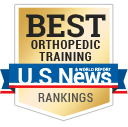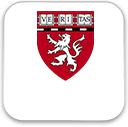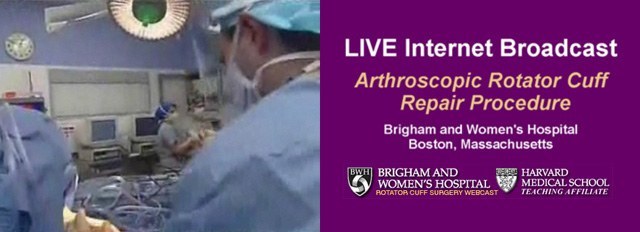Rotator Cuff
"The most comprehensive Rotator Cuff resource on the Web" Bringing you the best orthopaedic Rotator Cuff information, by Atlanta, Georgia physicians and surgeons. Content provided by the Harvard Trained Orthopedic Doctors Consortium. For a second opinion or "e-pinion" about your Rotator Cuff injury, Ask the Doctor. Dr. Hyman specializes in Rotator Cuff injuries.
The Rotator Cuff
The Rotator Cuff is a group of four muscles (and their tendons) that attach to the humeral head (the ball of the shoulder joint). They function to keep the ball in the correct position in the shoulder socket (glenoid). The four Rotator Cuff muscles are: Supraspinatus (most commonly torn), Infraspinatus, Teres Minor, and Subscapularis.
.jpg)
Subacromial Decompression Video
(filing down the bone spur that rubs or impinges on the rotator cuff)
Injury to Rotator Cuff tissue is commonly referred to as a: rotator cuff tear, glenoid torn rotator cuff, rotator cup tear, shoulder rotator cuff, or simply a 'cuff tear'. Inflammation of the rotator cuff is called tendinitis, tendinosis or tendinopathy - basically they all mean tendonitis or inflammation of the tendons. There can also be degeneration, fraying and tearing. Tears can be partial, incomplete, complete, full thickness, partial thickness, degenerative, articular sided, bursal sided, or intrasubstance. Orthopaedic surgeons classify them in different types, because some can be repaired and others are not really fixable or requiring repair in the first place.
Rotator cuff surgery or any procedure designed to fix a torn rotator cuff generally involves rotator cuff repair or rotator cuff surgery, i.e. re-attachment, reconstruction or restoration. It can also be referred to as stabilization, if the Rotator Cuff tear is associated with dislocation or instability.
Fortunately, surgery for a torn rotator cuff is not always necessary, and when it is, it's generally a highly successful outpatient procedure. The bad part about rotator cuff recovery is that it is SLOW. The recovery can depend on the patient's age, medical status (diabetes, smoking, high blood pressure), quality of the torn tissue (degenerative, atrophied, retracted, etc.) and the number of rotator cuff tendons involved (one, two or more = large, or massive). Click below to launch the webcast.
The Rotator Cuff tears can be repaired with a variety of surgical techniques. The 'older' way of doing it, is with OPEN surgery (larger cuts). The MINI-OPEN technique uses a combination of arthroscopy and a very small incision, and is the most common way the Rotator Cuff is presently repaired. In the last five years, as technology has advanced considerably, many cuff repairs can be done ALL ARTHROSCOPICALLY with small punctures (not 'orthoscopic'). Some surgeons are more comfortable with OPEN surgery, while others may do primarily arthroscopic surgery. The results can be good with all techniques, but the OPEN surgery can be more painful and take longer to recover from, generally speaking.
Rotator Cuff Tendon Injury occurs about 200,000 times a year in the USA. Rotator Cuff surgery is performed about 60,000-75,000 times a year in the USA. The torn Rotator Cuff remains one of the most important knee injuries in sports medicine. Rotator Cuff reconstructions are performed when an individual sustains a Rotator Cuff tear that is not adequately controlled with a sling or brace or the completion of an appropriate Rotator Cuff rehab program.
Rotator Cuff injury is seen equally in women and men, if you account for participation rates in sports. The incidence of injury is higher in people who participate in overhead sports (tennis, javelin, baseball, throwing sports, etc).
Surgery is often referred to as: repair, replacement, reconstruction or just plain surgery. The torn tendon is actually sutured or stitched to the bone in most cases.
Rotator Cuff surgery has a long term success rate of about 75-95%, which means most people get a good return of stability and activity. The current Rotator Cuff surgery failure rate is about 15%, due mainly to poor healing, traumatic re-tear, tissue/ graft failure, shoulder pain and shoulder stiffness. The tendon repair can be done more than once (revision).
Rehabilitation can last several months, including multiple trips to physical therapy and the gym. It is essential for complete Rotator Cuff recovery. Slings are used with and without surgery on the Rotator Cuff tendon. They are not always needed, and do not guarantee injury prevention, but can offer extra support shortly after injury or surgery.
General Shoulder Information
Sportfit.com's Rotator Cuff Diagrams (and sample exercises.) Shoulder1.com
Rotator Cuff Repair Videos
(WARNING: some are graphic!)
Technique of Arthroscopic Repairs via Cannula:
Dr. Gartsman's Patient Education Videos and Surgical Technique Videos
Rotator Cuff Images, MRI Images and Photos
- eMedx.com: MRI Scans of Normal and Torn Rotator Cuffs
- Boca Radiology Group: MRI of a Torn Rotator Cuff (Supraspinatus)
Rotator Cuff exercises and rehabilitation after injury or after surgery
- The American Academy of Family Physicians: Rotator Cuff Exercises and Diagrams.
















